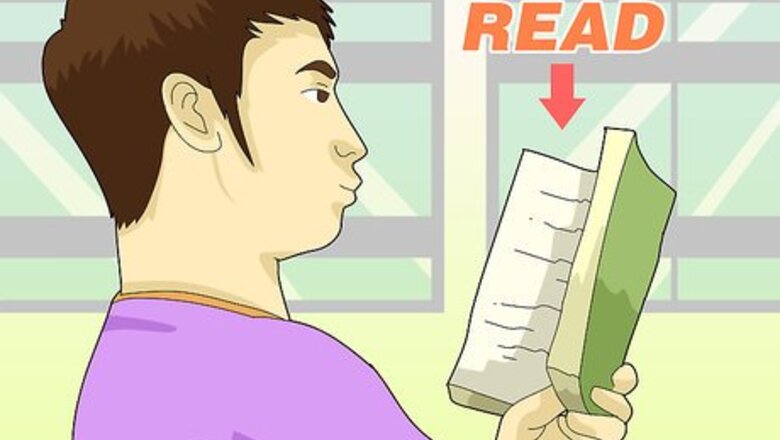
views
Preparing for the Lecture

Complete notes before the day’s lecture. Teachers assign notes so that you will be familiar with the topic being discussed in class. If you do the assigned notes before class, you’ll already know many of the background details. Then you can focus your note-taking on key concepts. Read through your notes from the previous lecture before class as well. This will help you get back up to speed on where you last left off in the class.
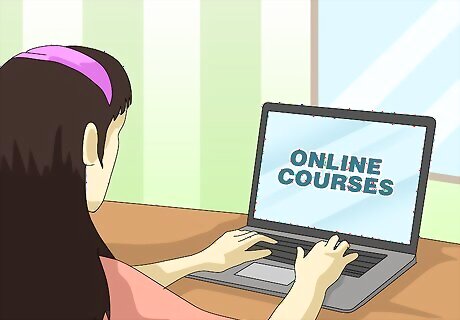
Check for online course materials and lecture outlines. If your teacher provides outlines, PowerPoint slides, or even a basic summary of the upcoming lecture, use it to your advantage. Think of it as the framing for a house, which you will then complete and furnish with your note-taking. It may be tempting to just print out that lecture outline or slideshow and figure you can skip note-taking during class -- or just jot down a few things on the printout here and there. But it is much better to use these materials to structure your notes. This is the best way to process information, which is after all the goal of note-taking.

Consider the pros and cons of typing notes during a lecture. Many students are more comfortable typing than writing, but there are still reasons to consider the tried-and-true method of putting pen to paper. Some studies indicate that students who hand-write notes are more able to comprehend and recall lecture material than those who type. It can be easier to fall into transcription mode on a laptop. You then try to type everything said instead of actively discerning what is most important to write down. Writing things down by hand can help you achieve greater focus. On the other hand, using a laptop or other electronic device makes it easier to format, save, edit, share, and read notes (with no worries about messy handwriting). Note-taking aids available on laptops are nearly endless, such as: “notebook layout” formatting on Microsoft Word, etc.; software that connects a recording of the lecture to your notes; note organization programs that let you unite materials of various type and formats, such as emails and PDFs; and collaborative note-taking platforms that allow you to team up with others to take notes in real time. These may be lifesavers or distractions for you. Only you can judge what works best. Some instructors and institutions ban the use of laptops in class, so don’t discount the need to know how to write notes by hand.
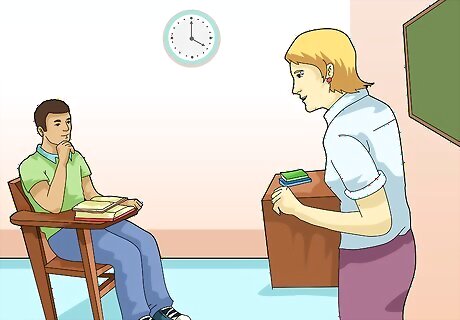
Sit near the front of the room. Choose a spot in the class where you will have few distractions. Then you will be able to pay attention better and take better notes. Find a spot where you can see and hear the lecturer clearly. You should also be able to see the board clearly. Show up to class a little early to ensure you get your pick of seats. If you find yourself distracted by noisy fellow students, an air conditioning vent, or an unfortunate glare on the projector screen, discreetly move to a new seat if you can do so without causing a significant disruption. Otherwise, do your best this time and find a new spot for the next time.
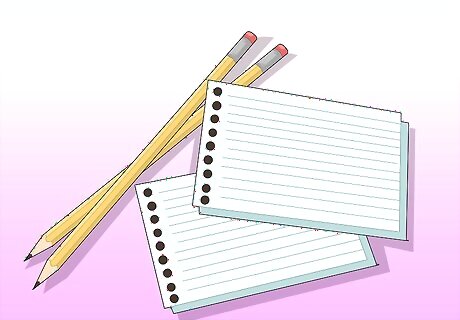
Make sure you are well-stocked with note-taking supplies. If you take notes by hand, bring extra pens or pencils and paper. If you take notes on a laptop or other electronic device, make sure it is sufficiently charged and ready to go as soon as class begins. Some people prefer using loose note sheets so they can lay them out on the table or floor when studying, while others find bound notebooks more tidy.

Label your paper with the date and topic of the lecture. Make sure your notes are clearly labeled for future reference. Write the date of the lecture and the topic at the top of each page. If you have multiple pages of notes, include page numbers as well. This will help you keep your notes in order.
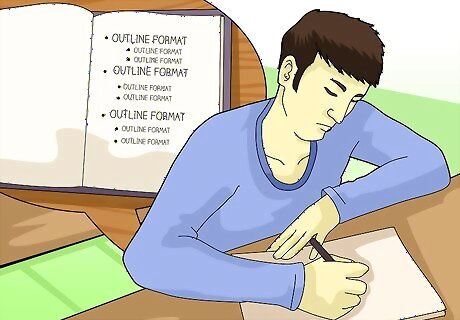
Consider formatting options for your notes. The more orderly your notes are at creation, the easier they will be to understand, revise, and study. One option is the outline format, especially if the lecture is clearly structured and/or presented in such a manner. In this format, you’ll have section headings. Underneath each section heading, write down ideas in bullet form and supplementary ideas with indented sub-bullets. This is much better than just writing down everything as a new point. Be warned that lecturers are not always organized about following main points with subpoints. Keep in mind that you may have to reorganize your notes after the lecture.
Optimizing Your Note-Taking
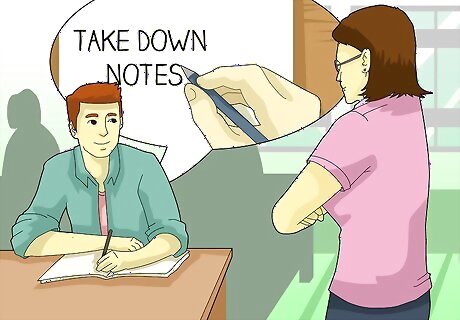
Remember to take notes instead of transcribing the lecture. In order to take better notes, you need to be an “active listener.” This means that you don’t just record what is said. Instead, you should engage with the material and determine the essential elements of what is being said. For instance, instead of spending time writing down every detail of Theodore Roosevelt's various foreign policy actions, strive to establish key concepts of his overall foreign policy and identify the examples as support. This way, you have already begun the process of learning and understanding (or, in other words, studying). This necessity of active engagement is one reason why many experts advise against recording lectures. If you have an access requirement that means it would be important to record lectures, or you feel it would be helpful to, make sure to ask the professor beforehand if it’s okay to record. The lecture is considered the professor’s intellectual property. In addition, some institutions have specific policies regarding recording - make sure to enquire about this, and sign any paperwork as necessary.
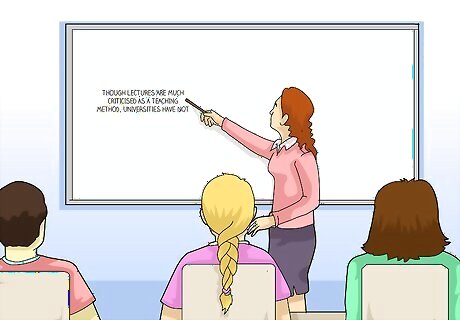
Listen carefully to the introduction of the lecture. Don’t waste time easing your way into note-taking mode at the beginning of class. Be ready to go from the very start. Lectures often begin with an explicit preview of what will be covered, or at least implicit “leads” about what is to follow. Listen carefully to the opening of the lecture for context clues that can help your organization and discernment of what will be most important. Don’t pay attention to students who arrive late or who are not yet ready to take notes.
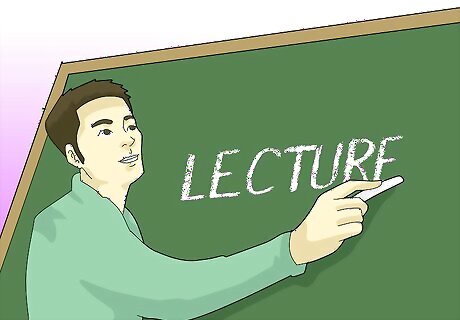
Copy down what is written on the board. Every instructor organizes each lecture into some sort of outline, even if it's implicit and loosely followed. The information that is included on lecture slides will give you a solid idea of how to keep your notes organized.
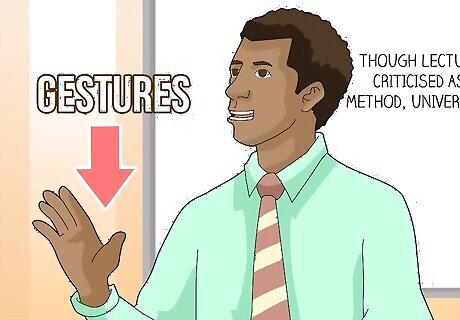
Learn to pick up on the lecturer’s cues and clues. The lecturer will use vocal patterns, hand gestures and other indications to emphasize important parts of the lecture. Start observing these patterns and gestures in order to discern what is essential information.. Recognize main ideas by identifying signal words and phrases that indicate something important is to follow. Your instructor is not going to send up a rocket when she states an important new idea or gives an example. But she will use signals to convey what she is doing. Every good speaker does it, and you should expect to receive these signals. Examples include: There are three reasons why... First... second... third... The significance of this is... The impact of this is... From this, we can see… Learn to identify other clues as well. When making a key point, the lecturer may speak more slowly or loudly; repeat a word or phrase; take a longer pause before resuming speaking (perhaps even to take a drink of water); gesture with his or her hands more demonstratively; stop walking around and / or look more intently into the audience; and so on.

Make up your own shorthand method. Shorthand writing is a way to use shortcuts so that you don’t have to write every single word. You can also write notes more quickly, an essential skill when listening to a classroom lecture. But when taking notes, don’t use true shorthand like a stenographer. This requires lengthy transcription. Instead, develop your own set of shortcuts, abbreviations, symbols, sketches, etc. Even if no one else knows what your shorthand means, you’ll know what you mean. Use abbreviations and skip unimportant words to take notes efficiently. Only record the important words that you need to get the idea of the point made. Skip words like "the" and "a" that do not convey additional meaning to the lecture content. Create abbreviations to help you write things down quickly, such as drawing arrows for increase/decrease or to show causation, and especially for terms used over and over again (e.g., IR for international relations). Paraphrase everything except formulas and specific definitions or facts that will likely be required verbatim on the exam. Underline, circle, star, highlight, or otherwise identify key examples, definitions, or other important materials. Devise your own marking code to indicate each type. Try drawing diagrams or pictures for concepts you can't quickly describe or immediately understand. For instance, draw a pie chart to roughly indicate the relative strength of political parties in a particular election instead of writing these details out.
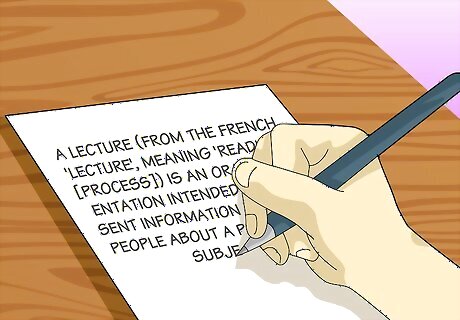
Write legibly. Make sure your letters and words are adequately spaced and legible so that you can read them later. Few things are more frustrating than being unable to read your own handwriting, especially when trying to study for a biology exam.
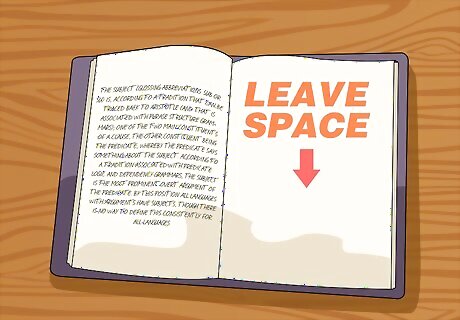
Leave space to work with later. Don’t try to cram as much as possible onto each sheet. Give yourself lots of white space on your page. More spaced-out writing allows plenty of room for revision and annotation later. This style is also easier to read and digest the information when studying.
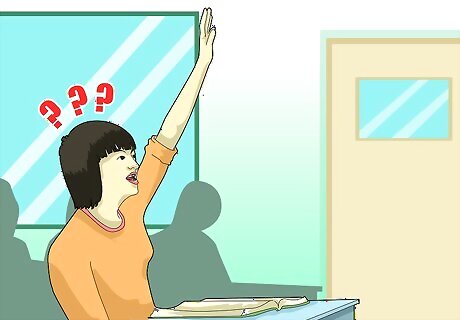
Pay attention at the end of the lecture. It is easy to zone out as the clock ticks near the end of the class period. Other students may be starting to gather up their materials and whisper to their friends about the latest gossip. However, the conclusion of the lecture is just as vital as the introduction in laying out the big picture and key themes and concepts. If there is a summary at the end of the lecture, pay close attention to it. You can use it to check the organization of your notes. If your notes seem disorganized, copy down the main points that are covered in the summary. It will help in revising your notes later.

Ask questions. During lecture, as well as at the end of the lecture, make sure to ask questions about points that you don’t understand. When other students ask questions, write down the questions and the instructor's answers. This additional information might answer questions you have as well. If you are self-conscious about holding up the class by asking a question (and annoying the students who already have one foot out the door), ask your professor after class. You’ll likely find other students doing the same, and can listen in on their questions as well. You can also bring a list of questions to your professor’s office hours.
Revisiting Your Notes
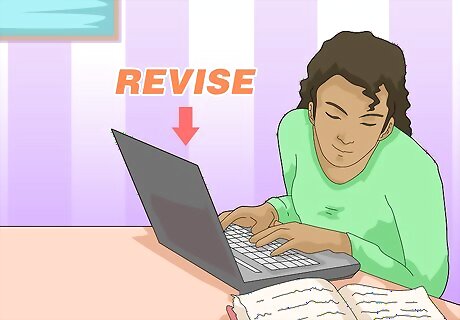
Review your notes as soon as possible. Do your review within 24 hours after the lecture. By this time, you may have already forgotten 80% of the lecture material. Build upon what you have learned, instead of having to re-learn the material.
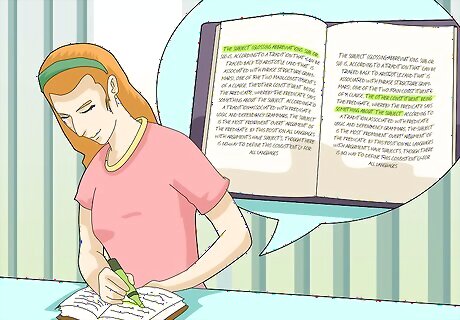
Revise, don’t just re-write, your notes. Think of your in-class notes as your draft copy, and the revision as your edited copy. Create a new version of your notes. This will be helpful especially if your notes are sloppy, disorganized, or borderline illegible. Don’t just copy down your notes as you originally wrote them. Make this part an active process of revision. Use the clues you picked up during the lecture regarding structure and key concepts to reorganize what you wrote down. Fill in weak spots with material from the textbook.
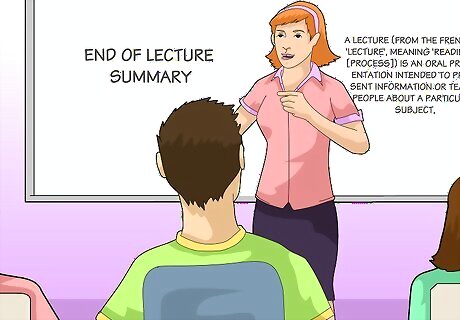
Highlight important parts of the lecture. When you are revisiting your notes, you should also spend time to highlight or underline important parts of the lecture. Use different colored highlighters or pens to color-code recurring concepts. Marked-up notes will be valuable when you begin to study for the test. These allow you to quickly and efficiently recall key parts of each lecture.

Get notes for missed classes. If you have missed a class due to illness or another reason, you should be sure to get notes from a classmate. Talk with the instructor as well so that you understand the material. Don’t rely on a notes-for-sale service. Most universities have a policy against using these types of notes. Remember, using purchased notes is not “active learning” that aids in understanding and retention. If you have a physical or other documented disability which makes note-taking difficult, discuss options with your professor and your institution’s student services. Various options, including perhaps special lecture guides, note-taking assistance, permission to record lectures, or tutoring, will likely be available.
Trying the Cornell Method of Note-Taking
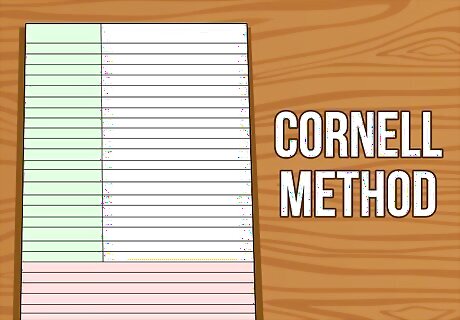
Divide your paper into three sections. The Cornell Method is a way to take notes that involves first taking notes and then developing questions from those notes. Divide your sheet into two sections by drawing a vertical line about 2.5 inches from the left margin. Continue this line until about two inches from the bottom of the sheet. Then draw a horizontal line two inches from the bottom edge. For laptop users, there are programs that can format your word processor in Cornell Method style.
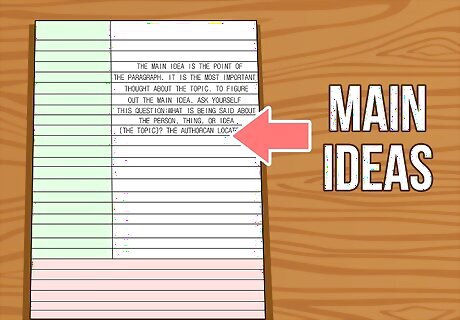
Write down the main ideas of the lecture. In the largest section of your now-divided page, take notes on the main ideas of the lecture as you go. Leave ample space for later revisions. Add examples, diagrams, charts, and other material that the instructor discusses.

Pose questions to yourself after the lecture. The left-side section of your page is used for generating your own questions from the lecture notes. These questions may help clarify points, definitions, and so on. Review your notes within one or two days. This will ensure that your recall of the information will be stronger. You can develop potential test questions from this material. What do you think the instructor is going to ask on an exam? When you are studying your notes for an exam, cover the right-hand side of the page. See if you can answer the questions that you’ve included on the left-hand side.
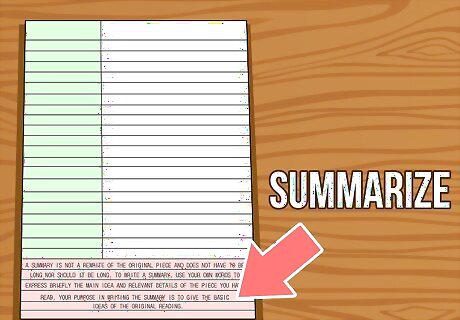
Summarize the lecture notes at the bottom of the page. Use the bottom section of your page to provide a summary of this page’s notes. This will help you recall the important points for this portion of the lecture.



















Comments
0 comment